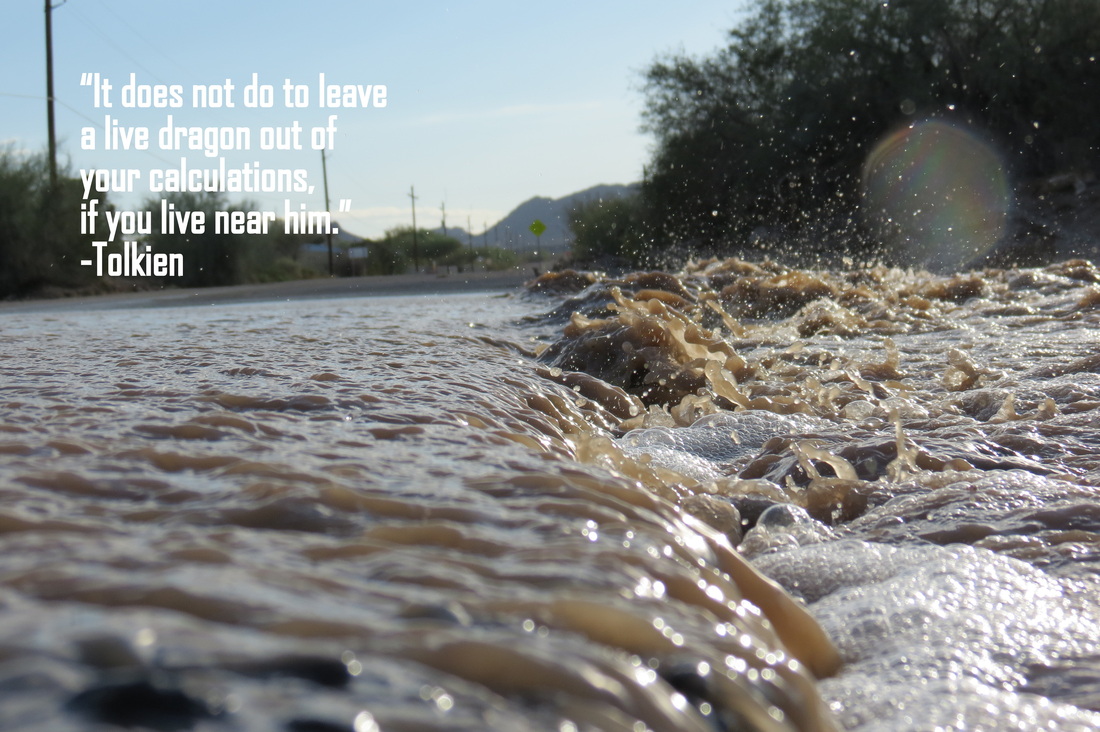La Paz County Public Health Emergency Response and Preparedness
An emergency response division of the Health Department1320 Joshua Ave, Suite A
Parker, AZ 85344 928-669-9364 Fax: 928-669-1939 Preparing for and responding to public health emergencies in La Paz County since 2002. We take an All-Hazards approach with a public health twist.
|
Are we at risk?
La Paz County is susceptible to flash flooding in most parts of the county. Flash flooding happens when storms release too much rain water for the ground to soak up. In the desert, that happens quickly. Often, a storm will release enough rain to cause flash flooding miles away. La Paz County is crisscrossed with many washes. Never drive in a flooded wash, it's often deeper than you think and just 2 feet of water can float most cars.
Centennial Wash
In the communities of Salome and Wenden, Centennial Wash can quickly rise during a monsoon or winter storm. In October 2000 and January 2010, Centennial Wash flooded into the town of Wenden, causing evacuations and damage to many residential homes and businesses. Pandemic Influenza
Influenza may seem like a harmless illness but, it's a deadly virus that likes to mutate. Historically, the flu has caused millions of deaths worldwide. In 1918-1919, the Spanish flu infected 20-40% of the world's population and killed 50 million. 1957-58 saw another new strain of flu. This one killed about 68,000 people in the United States. 1968-1969 was the year of the Hong Kong flu. It was a mild pandemic with only 33,800 deaths. In 2009-10 public health officials were alerted to another new strain of flu called H1N1. It was detected on April 15th and by April 21st, Centers for Disease Control and Prevention began work on a vaccine. This flu attacked young, healthy people and caused up to 18,300 deaths. Bioterrorism
A bioterrorism attack is the deliberate release of viruses, bacteria, or other germs (agents) used to cause illness or death in people, animals, or plants. These agents are typically found in nature, but it is possible that they could be changed to increase their ability to cause disease, make them resistant to current medicines, or to increase their ability to be spread into the environment. Biological agents can be spread through the air, through water, or in food. Terrorists may use biological agents because they can be extremely difficult to detect and do not cause illness for several hours to several days. Some bioterrorism agents, like the smallpox virus, can be spread from person to person and some, like anthrax, can not. |
Information for FamiliesInformation for Clinicians |
|
